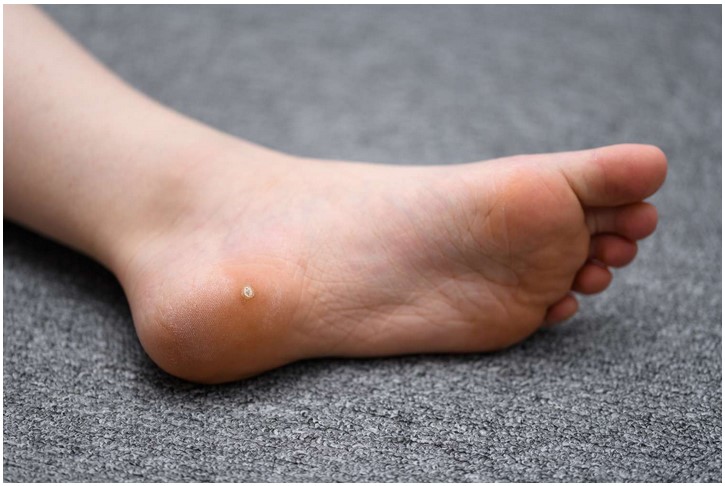
Plantar warts, also known as seed warts, are a common skin condition that can affect the bottom of the foot. They are caused by a virus and can be painful and unsightly. While there is no cure for plantar warts, there are several treatments available to help manage them. This article will discuss the causes, symptoms, and treatments for seed warts on the bottom of the foot. It will also provide tips on how to prevent them from occurring in the first place.
How to Identify a Seed Wart on the Bottom of Your Foot
Seed warts are a common skin condition that can affect the bottom of the foot. They are caused by a virus and can be highly contagious. Identifying a seed wart is important in order to take the necessary steps to treat it.
The most common symptom of a seed wart is a small, hard bump on the bottom of the foot. It may be slightly raised and have a rough texture. The bump may also have a pattern of small black dots, which are actually tiny blood vessels. The bump may be painful when pressure is applied.
In addition to the bump, seed warts may also cause itching, burning, and tenderness. The area around the wart may also be red and inflamed.
If you suspect you have a seed wart, it is important to seek medical attention. A doctor can confirm the diagnosis and provide treatment options. Treatment may include topical medications, cryotherapy, or laser therapy.
By recognizing the signs and symptoms of a seed wart, you can take the necessary steps to treat it and prevent it from spreading.
Treatment Options for Plantar Warts Caused by Seed Warts on the Bottom of Your Foot
Plantar warts, also known as seed warts, are a common skin condition that can affect the bottom of the foot. These warts are caused by the human papillomavirus (HPV) and can be painful and unsightly. Fortunately, there are a variety of treatment options available to help reduce the size and severity of plantar warts.
The first line of treatment for plantar warts is typically over-the-counter medications. These medications contain salicylic acid, which helps to break down the wart tissue. It is important to follow the instructions on the package carefully, as overuse of these medications can cause skin irritation.
If over-the-counter medications are not effective, a doctor may recommend cryotherapy. This involves freezing the wart with liquid nitrogen, which causes the wart tissue to die. This treatment is usually done in a doctor’s office and may require multiple sessions.
Another option is laser therapy. This involves using a laser to destroy the wart tissue. This treatment is usually done in a doctor’s office and may require multiple sessions.
Finally, a doctor may recommend surgery to remove the wart. This is usually done under local anesthesia and involves cutting away the wart tissue.
No matter which treatment option is chosen, it is important to keep the area clean and dry to prevent the spread of the virus. It is also important to wear shoes that fit properly and provide adequate cushioning to reduce the pressure on the wart.
By following these steps and seeking appropriate treatment, it is possible to reduce the size and severity of plantar warts caused by seed warts on the bottom of your foot.
Conclusion
In conclusion, managing plantar warts on the bottom of the foot can be a difficult and uncomfortable process. However, with the right treatment and care, it is possible to reduce the size and severity of the warts. It is important to seek medical advice if the warts are causing pain or discomfort, or if they are not responding to home treatments. With the right treatment, it is possible to reduce the size and severity of the warts and prevent them from spreading.